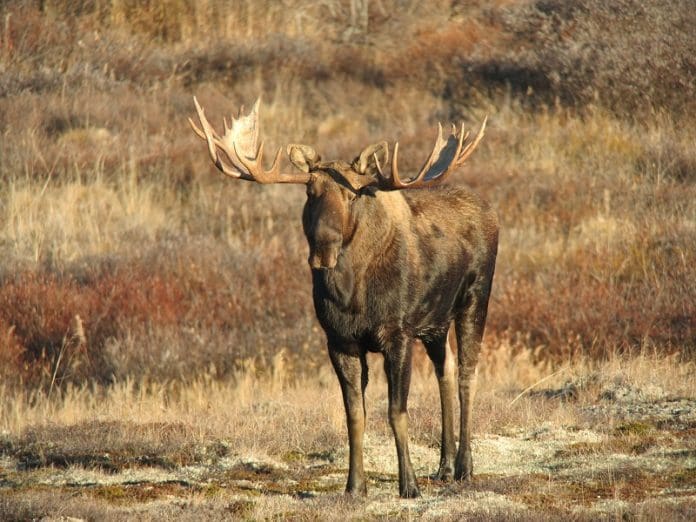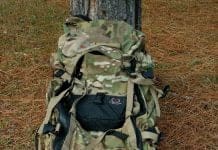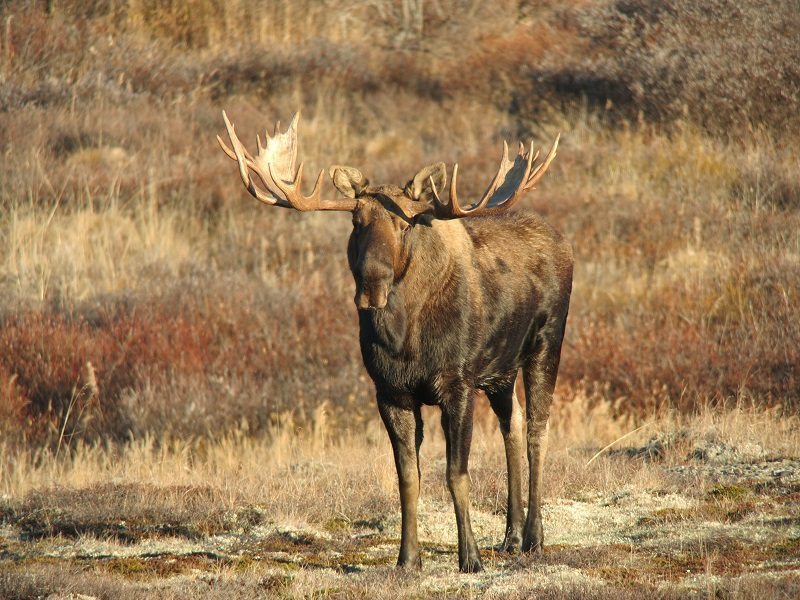
Alaska DIY Moose, The Inside Scoop, Part I
By Billy Molls, Rokslide Guest Writer
An Alaskan bull moose can weigh nearly 2,000 pounds. His antlers can stretch over 70 inches wide. To hunt the largest of the deer species is arguably the greatest DIY hunt adventure in North America.
If you’re able-bodied, adventurous, committed, and do your research, a DIY Alaskan moose hunt is a great way to experience the Last Frontier. While most of the DIY hunters I’ve helped over the years have encountered and endured various obstacles and tribulation along their journey, a vast majority of them rave how their moose hunt was one of, if not the greatest, hunting adventure of their lives. DIY hunting is the best way to truly come to know and understand the animal, the environment they live in, and how to successfully hunt whatever species you’re pursuing. When you do it yourself, 100% of the success and failure falls on your shoulders. If you’re up to the challenge, the rewards can be far greater than most any guided hunt.
To be clear you don’t have to be physical specimen to do this. Many “Average Joe’s” go on DIY hunts in Alaska, and are successful every year. Mental fortitude is far more important than the physical. The DIY hunter who finds and utilizes proper resources, understands any limitations he and his party may have, develops a plan, and implements that plan, is far more likely to succeed than the foolhardy young-buck who thinks he’s going to conquer Alaska on his inaugural 10-day stint in the bush. Win, lose, or draw, the former almost always flies away from the wilderness satisfied with himself and his efforts. The latter can quickly find himself and others in serious trouble. No matter how seasoned of a hunter you are, you can’t force Alaska into giving you anything she’s not ready to let go of. Hunting in any wilderness requires patience, good judgment, basic hunting instinct, and the ability to capitalize on opportunities when they present themselves.
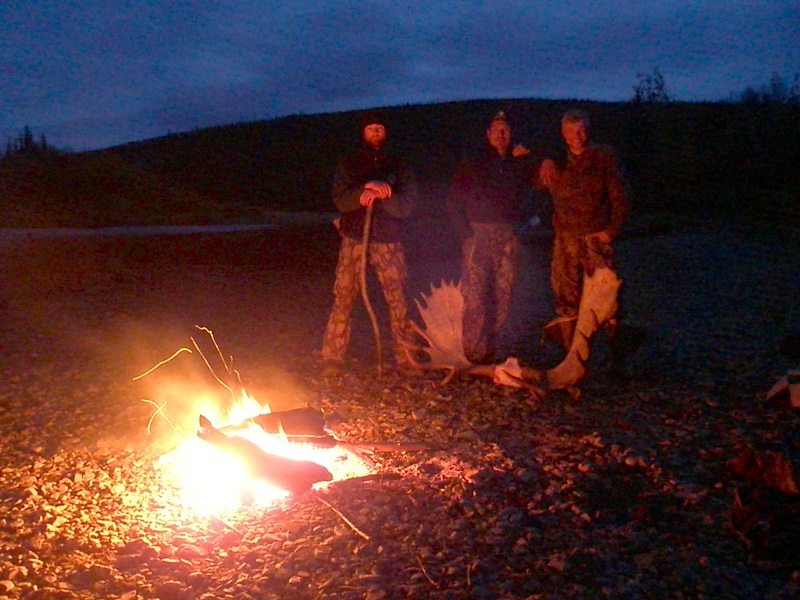
Billy and hunters enjoy a cool autumn evening after a successful hunt
I always tell prospective Alaskan hunters “80% of your success depends on where you’re dropped off.” Selecting a good area and a quality air taxi or transporter is the first step. First-person referrals of someone who has been there, has the T-shirt and the big bull to prove it are the best, but those aren’t always possible. Online resources, including forums like Rokslide www.rokslide.com/forums are also great resources, but one often needs to sift through some chaff to find the seed.
I just received a call from a fellow Rokslider the other day.
“There’s so much out there,” he lamented, “I just don’t know what, or who to believe.”
Whether you choose to follow the path of a fellow hunter, members of the online community, or take the advice of an experienced hunting consultant like myself, after the research is done, at some point you have to take a leap of faith.
In 19 years, and counting, of guiding hunters in Alaska I still have yet to tag a big game animal in the 49th state for myself. If the day ever comes that I choose to do so, I know exactly where I will go for any species. That knowledge comes from one source: experience. When you don’t have experience to guide you, the road ahead can become daunting and overwhelming. I’ve been fortunate to hunt a fair bit on other continents. I’ve found that assistance from a reputable person(s) with intimate knowledge of the areas was invaluable. You cannot beat firsthand, in-the-field experience. My reason for writing this piece is to share some of what I have learned about guiding and hunting moose in Alaska. Hopefully it will educate and inspire those who are considering an Alaskan adventure of their own someday.
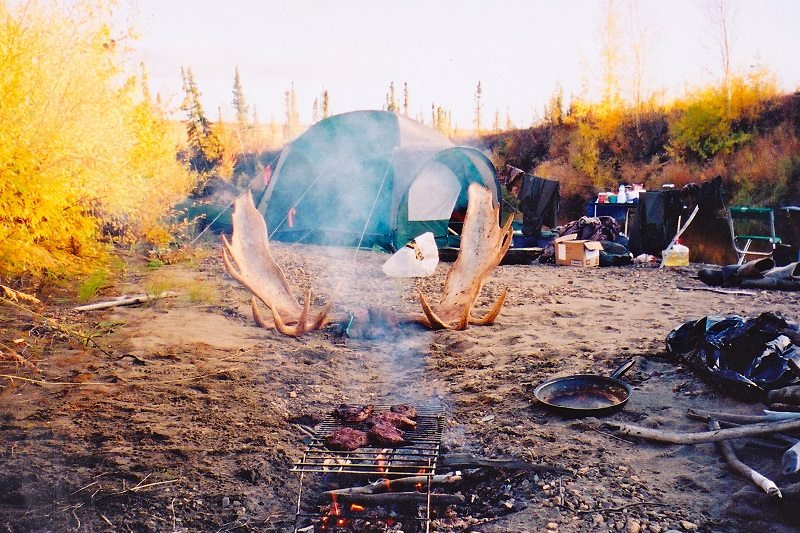
Next to Dall sheep, moose meat is the author’s favorite wild game meat
METHODS OF HUNTING
River floating is an excellent option if you’re looking to fish and explore a lot of country, but don’t mind the work of loading and unloading the raft, and tearing down and setting up camp most days. Not to mention loading and unloading meat if you’re successful. A float hunt is a great option when hunting areas with lower moose densities, as you are very mobile. A river float, first and foremost is an adventure. It will likely require more legwork in planning, mapping, coordinating, etc. For those who are concerned about packing a moose, this is a good option because you don’t have to leave the river corridor. Calling is key to this method. I will share some tips later in this article.
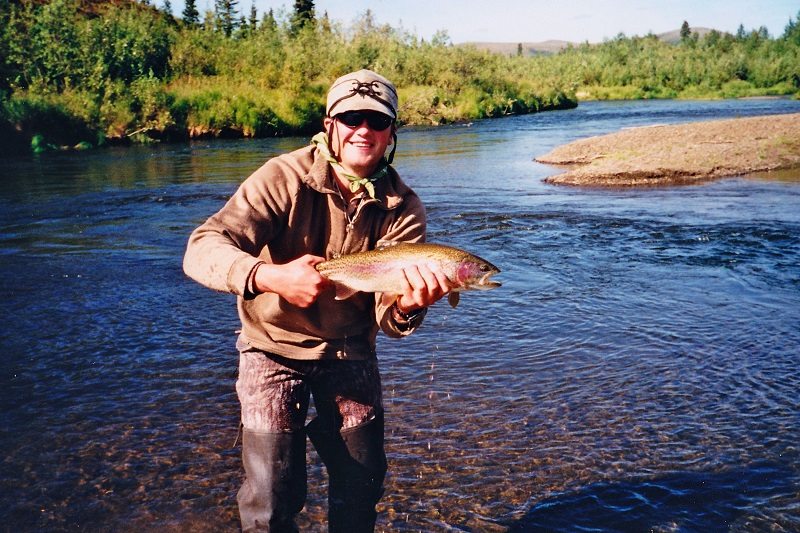
The potential for world-class fishing is one of the many potential benefits of a float hunt
Hunting a lake is typically less work than floating a river. Often you can set up a more comfortable/permanent camp. A raft or boat to offer maneuverability is a tremendous asset. Typically you won’t have the option to climb a hill for a vantage point, which is a major downside, but if the moose population is high, a good moose caller will do just fine.
Foot hunting can also be effective. If you’re hunting a high-density area, and are ambitious and physically capable, this is my preferred method. It is a simple way to hunt. Often times a foot hunter utilizes a light-weight camp, which in turn allows him to access areas that other hunters won’t, or can’t go. The moose hunts I guide and often recommend to DIY hunters are ridge-top hunts where you can glass relatively open country. These areas are typically accessed by single-passenger Super Cubs. Camps are minimal, but when you get away from the convenience of rivers, you eliminate 90+% of the competition from other hunters. The downside is the lack of mobility. However, with proper moose calling techniques success is often very high.
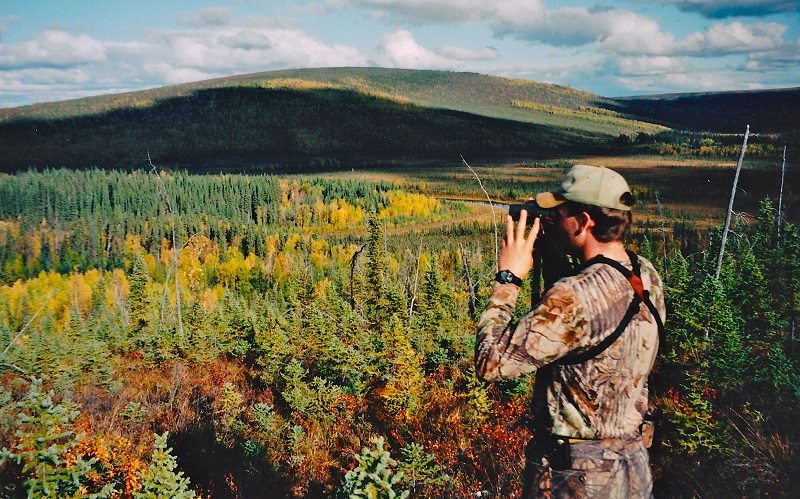
Billy glasses for early season moose. Clients have taken most of their bulls between the hours of 8 am and 11 am
AIR TAXIS AND TRANSPORTERS
For a true Alaska wilderness moose hunting experience, I suggest bush plane fly-out hunts, or to fly commercially to a small village near a river and rent a boat to gain access to remote areas. Like anything, prices and options on DIY hunts vary. Bush flying is very technical, seasonal, and unpredictable; therefore it is expensive. Air taxis and outfitters are in business to make money, so if you see a cheap price tag, I would ask, “How is this operation making money?” You will usually find the cheaper fly-out hunts survive by at least one of two ways: By offering shorter, less costly flights, and, or, by volume.
On average, the further you fly into the bush, the less competition you will have. I recently saw a video clip of a hunter in Alaska.
“We may be the only people for 200 miles.” He said.
Maybe he felt that way, but I assure you, he wasn’t. As big as Alaska is, people come from all around the world to hunt there. It’s a busy place in the fall. The closer you hunt to cities, or even small villages, the more likely you will encounter other hunters. I’ve spoke to many hunters who were overwhelmed by the number of people they saw on their “backcountry” adventure. Even in the most remote regions of Alaska you’re likely to see other airplanes and occasionally other hunters. If you’re hunting a major river, or you’re within an hour’s flight of Anchorage, Fairbanks, or another larger city, you’re more likely to run into other people. No one goes to Alaska to see other hunters every day. The real Alaskan experience comes when you get away from the crowd.
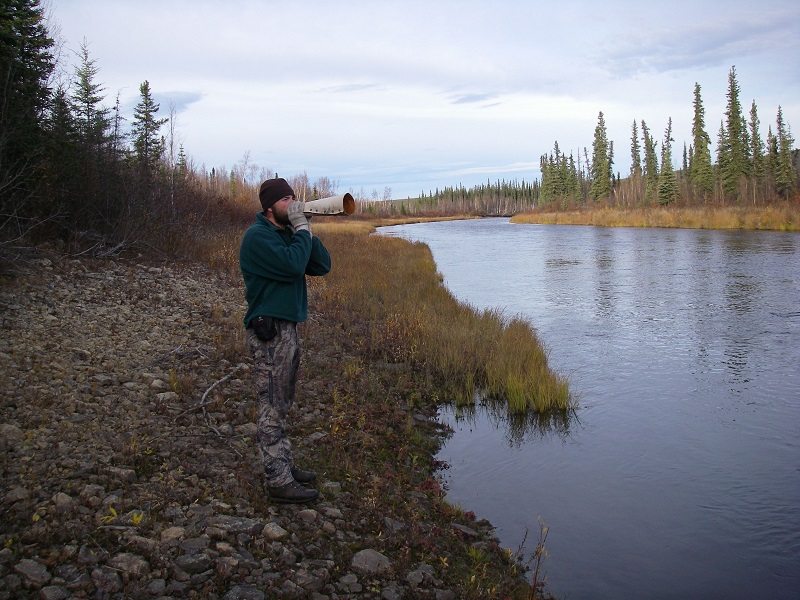
Bringing a giant bull moose into your call is an experience a hunter will never forget
Every few years I like to go to Ontario walleye fishing. It’s reasonably priced. We always catch fish and I like Canadian beer. The lodge owners make their money by keeping their outpost cabins full EVERY WEEK. The morning one party leaves, you can bet that afternoon another party arrives. Many Alaskan air taxis do that as well. To save money and time they will fly one party into a previously hunted camp, drop-off the new clients, and pick-up the outgoing hunters. Sometimes hunting a previously hunted camp works just fine, but many Alaskan hunters have landed in a camp where the previous hunters didn’t see any game. At that point optimism is a tough commodity to come by.
I point these things out because they happen every year. That’s not to say you won’t have a great experience going with a less expensive operation, but those are the most common short cuts I know of to keep prices low. In general, the more remote you go the more your hunt will cost. One must consider all your fixed costs: flights to AK, license, tags, gear, hotels, satellite phone rental, etc., (not to mention time away from work/home). If cost is an issue, I suggest saving money one extra year to go with the outfit you’re most confident will provide the best service.
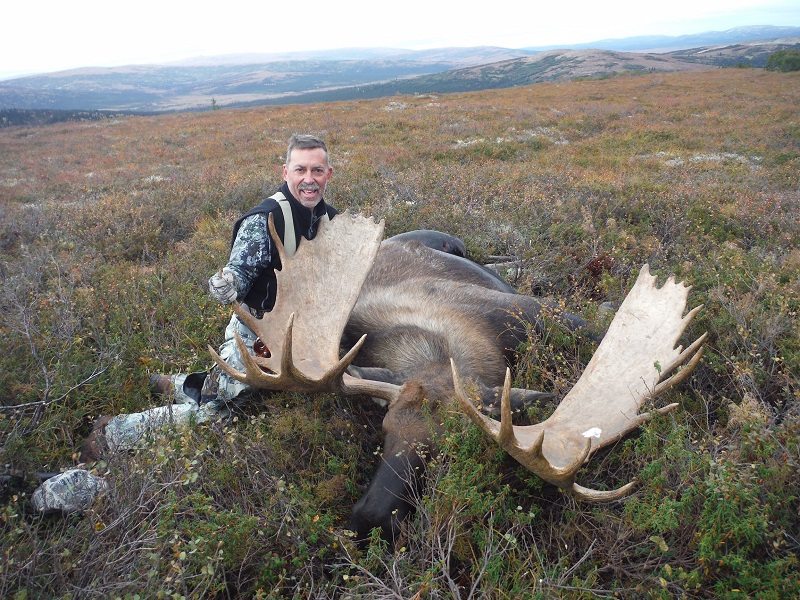
After three days of cat-and-moose with a 70-incher, this Alaskan DIY hunter was still very happy with his 64″ moose
One more thing to consider that is commonly reflected in low price and can certainly hinder the enjoyment of your trip is quality gear. Going with a transporter or “outfitter” that is providing your camping equipment can save you a lot of time and money, as long as they don’t provide worn-out 1960’s Boy Scout models. The older I get the more important it is to me to be comfortable. If you’re young and tough, maybe a leaky tent or a leaky raft doesn’t bother you like it would me. If you like a dry sleeping bag and rafts that float, I highly recommend asking a lot of questions to any service you’re considering (and their references) about the quality/age of any gear that is provided. I will talk more about tents below and other gear in Part 2 of this article.
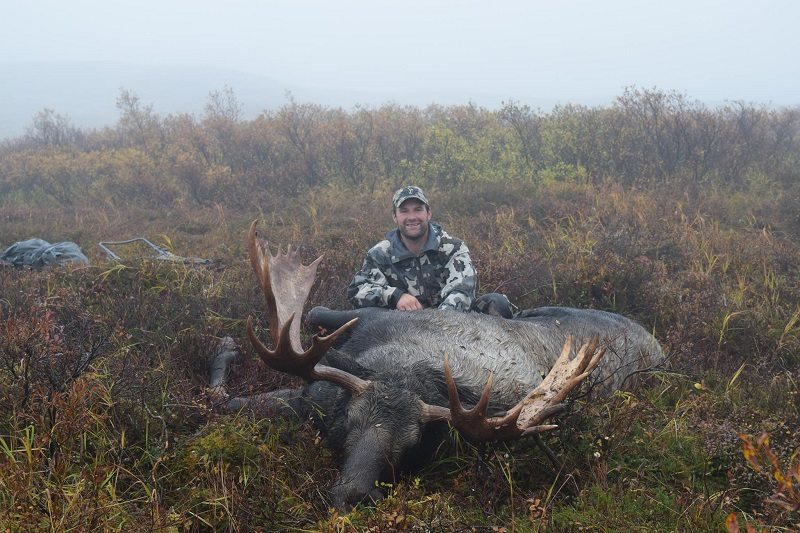
A happy first-time DIY moose hunter from North Dakota
COST
From the time you leave home, fly to Alaska, fly into the bush, shoot a bull, get it and yourself home, you will likely have $9,000-$14Kinto a quality, remote DIY moose hunting adventure. The average overall success rate (Alaska Department of Fish & Game statistics) for moose hunting in Alaska is less than 30%, but there are some DIY hunts that typically result in 90+% opportunity. I strongly suggest focusing on lower-volume operations in remote areas with consistent track records.
Part II of this article will be released shortly. Be sure and subscribe at the forum link at the end of this article.
SIDEBAR: DIY TENTS
Robby Denning told me if I didn’t include some gear info. in my articles, I would likely wake up in the middle of the night to a masked band of gear-lovin’ Roksliders beating me with a rubber hose! So, here’s a tidbit on tents for your Alaskan adventure.
A quality shelter can save your life. Tent selection will depend largely on the typical weather conditions where you hunt, weight restrictions, and how mobile you need to be. Here’s a few I’ve used, and have received questions about from DIY Alaskan hunters. This list is by no means exhaustive, but these are tents I’ve used extensively and are commonly used in Alaska.
Arctic Oven-
Pros: First-class comfort, durable, withstands strong winds, most you can stand up in, it has a stovepipe jack so you can use propane stove that will actually dry your tent/gear
Cons: Heavy, bulky, expensive
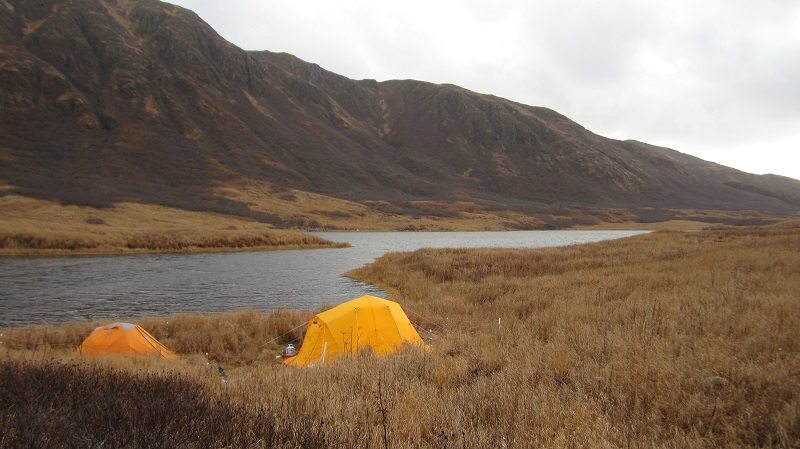
An Artic Oven and a Cabela’s XPG tent made for a very comfortable 3-man camp
Bombshelter-
Pros: withstand high winds, Good tent for 2 persons, simple design
Cons: In my opinion, this tent is almost obsolete as it there are lighter weight tents that are just as strong (Hilleberg and others). Arctic oven is a bit heavier, but far more comfortable.
Cabelas XWT-
Pros; Reasonable weight for the durability, Reasonable price for quality, Allows 2-full height cots, perfect size for 2 hunters and gear, great tent in a fixed camp.
Cons: set up time is high, not a tent for a float trip, too heavy unless you anticipate high winds
Cabelas Geodesic-
Pros-Resonable price, spacious, great Alaska tent if you’re hunting on a river/protected areas, relatively quick and easy to set up, relatively lightweight for the quality and size, can stand up in.
Cons: would not trust on ridgetops/high wind areas
Hilleberg various models-
Pros: strong, lightweight, many great models for hunts where weight is an issue, one of the best tent options per pound, great all-around tent
Cons: expensive, typically very low profile/can’t stand up in.
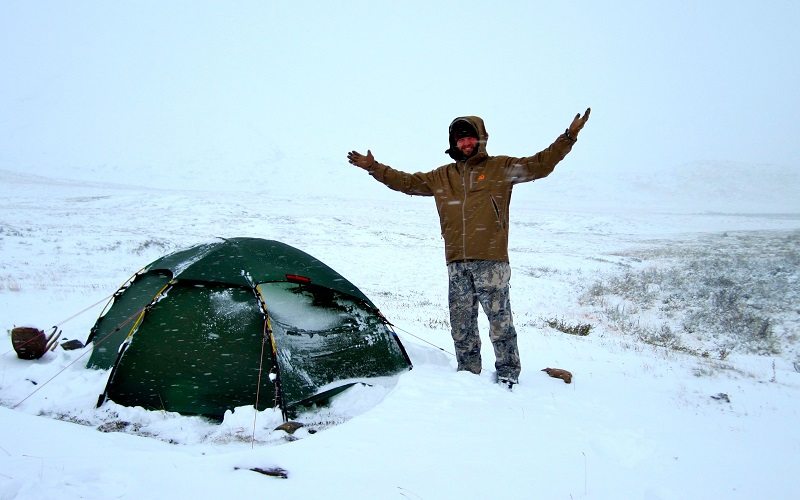
Billy has weathered many storms in Alaska. This Hilleberg Allak is one of his favorite lightweight options
It’s not too late to book your own 2017 Alaskan DIY moose hunt with help from an expert! Billy still has a couple great options with OTC tags for 2017 that won’t last long, and it’s not too early to start planning for 2018. To contact Billy for more information on DIY moose and caribou, or other guided hunting opportunities in Alaska click here
To watch a sample of some of Billy’s Modern Day Mountain Man Alaska hunting videos click here
To see more photos of Billy’s Alaskan hunting adventures click here
You can ask Billy questions or discuss this article here
You can read Part II here















